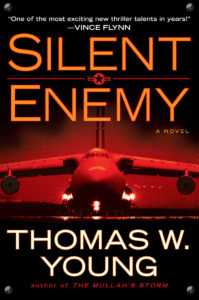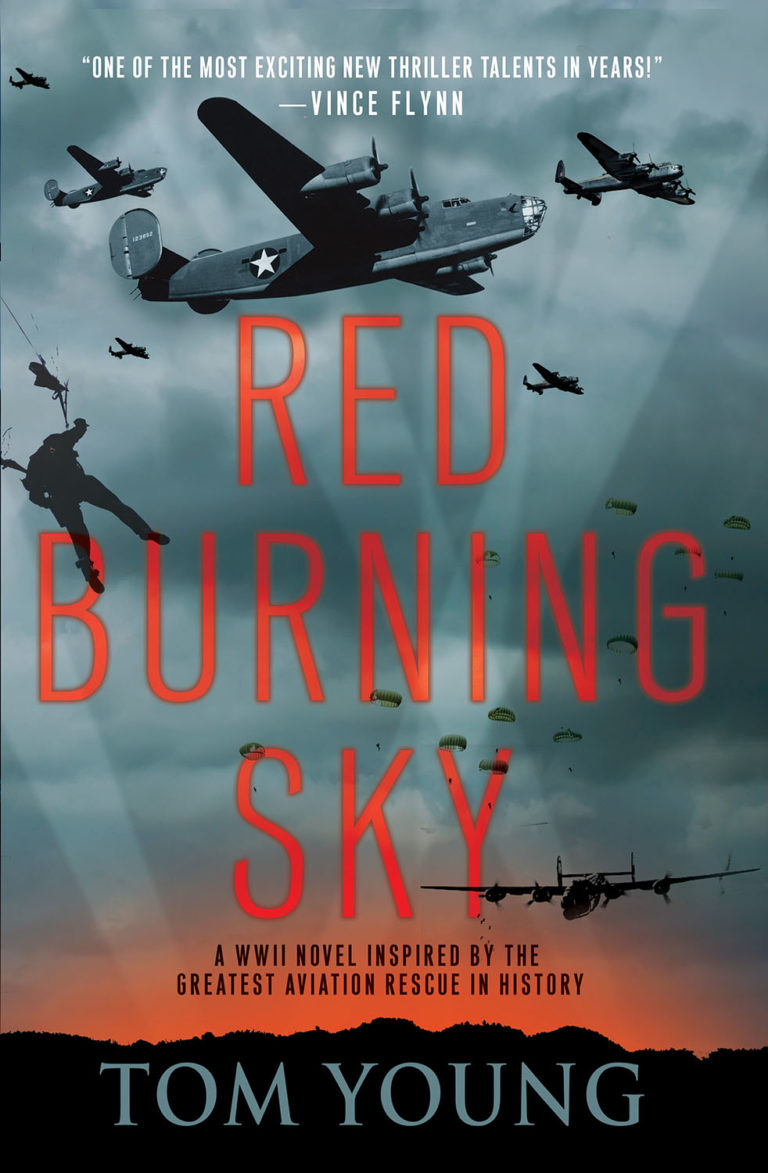Silent Enemy Backstory
 In my previous novel, The Mullah’s Storm, Major Parson and Sergeant Gold found themselves shot down, trapped on the ground, fleeing an enemy they fought hand to hand and bullet by bullet. In Silent Enemy, they meet again for what should be an uneventful flight, transporting wounded out of Afghanistan — but a terrorist bomb traps them at altitude, unable to land. The crisis forces them on a journey more than halfway around the world, beset by danger.
In my previous novel, The Mullah’s Storm, Major Parson and Sergeant Gold found themselves shot down, trapped on the ground, fleeing an enemy they fought hand to hand and bullet by bullet. In Silent Enemy, they meet again for what should be an uneventful flight, transporting wounded out of Afghanistan — but a terrorist bomb traps them at altitude, unable to land. The crisis forces them on a journey more than halfway around the world, beset by danger.
From the Trojan War to the War on Terror, tales of a ship and crew in peril have timeless appeal. We can all relate to the fear of getting lost, the challenge of facing the elements. We can all envy the bonds that form within the crews, and admire the skills they bring to bear, whether they’re seamen climbing through rigging or airmen climbing through clouds. We’re all fascinated by their leaders, from Odysseus to Captain Kirk. How will he handle this problem? What would we do in his place?
For military aircrews, these types of questions come up all the time. As an Air National Guard aviator, I’ve found myself in situations where the worst could have happened if not for the commander’s leadership, the crew’s airmanship, and a little mercy from the gods of wind and storm.
One morning in 1998, my crewmates and I were in the middle of a long trip home from an airlift mission in Bangladesh. We took off from Kadena Air Base on the Japanese island of Okinawa in our C-130 Hercules cargo aircraft, headed for Wake Island, a tiny atoll in the Pacific. Enroute, we suddenly encountered unforecasted, unfavorable winds. As the navigator and I made calculations, the cost in groundspeed and fuel became clear, and it became apparent we might not have the fuel to reach Wake. Looking down, the ocean never seemed so vast. We discussed options with the aircraft commander, considered turning around, declaring a fuel emergency, landing at Iwo Jima. . . .
…And then the winds shifted to our tail, the numbers improved, and we landed at Wake with fuel to spare.
My logbook also includes about five engine shutdowns, smoke in the flight deck, a couple of hydraulic losses, a brake fire, two pressurization failures, and electrical weirdness not even covered by the flight manual.
In Silent Enemy, Major Parson has those kinds of troubles, and they compound as his long flight continues. That happens in airplanes: a malfunction in one system might cause problems with another. What makes it worse for Parson is that he can’t land for repairs without triggering the bomb. As you might imagine, there aren’t too many things you can fix on an airplane while it’s flying.
But Parson can refuel in the air. He keeps his aircraft aloft through multiple aerial refuelings. Military fliers practice aerial refuelings so often they become routine, and as a crew member you almost forget the inherent danger of two jets flying within feet of each other. That is why I chose to describe the novel’s first aerial refueling from the point of view of Sergeant Gold, one of the passengers.
Throughout the novel, the point of view switches between Parson and Gold so the reader can experience the flight from the perspective of both pilot and passenger. For Parson, the burdens of leadership weigh heavy as he and his crew grow tired, the patients worsen, and the aircraft breaks down around them. For Gold, the journey tests her faith, her endurance, and her belief in the fight for a better world.
This is all further complicated by the fact that this is a medical flight. The most poignant journeys I’ve ever flown as a military flier have involved transporting troops injured in war. The entire concept of modern combat medicine depends on airlifting the severely wounded off the battlefield almost immediately. In the old days, the effort focused on moving medical facilities as far forward into the combat zone as possible (think of the old MASH units), but now it’s the reverse, moving the wounded to state-of-the-art medical centers in Europe or the U.S.
This means transporting people still fighting for their lives: treatment continues almost seamlessly from battlefield to combat theater surgical facility to major hospital, and the wounded fly while still under intensive care. Flight nurses and medics, called aeromeds, specialize in this continuity of care, their equipment and training turning the back of an airplane into a sick bay. Silent Enemy puts readers on board an airborne emergency room, where the flight nurses and medics deal with the most heartbreaking of war injuries in a confined space rocked by turbulence and subject to all the other hazards of flight.
One hazard they usually don’t have to worry about, however, is a midair explosion. The novel’s basic plot element is fictional, and I’d like to think the Air Force’s security police will make sure it stays that way. But if a crew ever did take off with a bomb rigged to detonate on descent, the ensuing events might be terribly similar to those described in Silent Enemy. As my wife read the manuscript, she noted that I seemed to be retelling every in-flight crisis I’d ever experienced or trained for.
I happened to write a few pages of Silent Enemy while stuck with several other aircrews in Rota, Spain. We were waiting out a cloud of volcanic ash that had played havoc with air traffic all over Europe. It seemed appropriate to work on a journey story while I was in mid-journey myself, trapped at an ancient seaport, running into old crewmates I hadn’t seen in years. Some were on the way out of Iraq or Afghanistan. Some were on the way in.
As I complete this essay, their travels continue. In even the best-case scenarios, young soldiers, sailors, and airmen will keep going into harm’s way. At any moment, service members like my fictitious Major Parson and Sergeant Gold are in the skies above you, headed for wherever their missions take them. When they get there, politics won’t matter. They’ll care only about doing their jobs, watching their friends’ backs, and getting home. I hope Silent Enemy offers a glimpse of who they are and why they do what they do.
